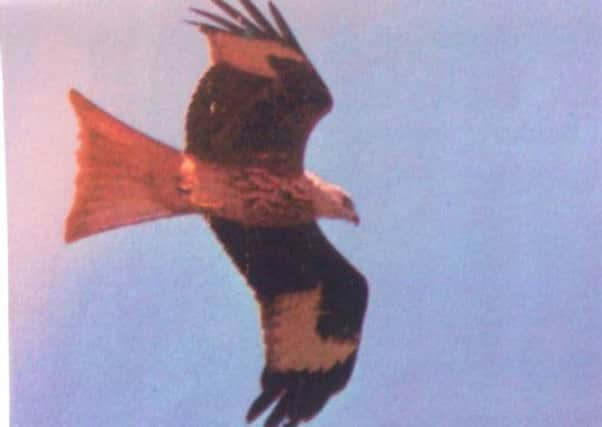RICHARD WILLIAMSON: Soaring kites add colour to a wintry sky


Let Mark Twist tell the story: “I have been mountain biking locally for many years and nearly always see buzzards everywhere and occasionally red kites at Stoughton and the Trundle.
“On Tuesday, December 10, I was cycling near Chilgrove when I saw a large group of what I thought from a distance were buzzards, but realised as I got closer were actually red kites.
Advertisement
Hide AdAdvertisement
Hide Ad“They were all in flight, less than 50m up and within an area of less than a football field.
“I couldn’t count them accurately as they were all jockeying for airspace, but there were definitely more than ten, probably 12 or 13, maybe 15!
“There was no doubt they were all red kites and I was surprised to see so many together.
“I have only seen singles or pairs before.”
On that date I see from my records that we had calm, cloudy weather with a temperature of 8C during a dry spell of high pressure. So the kites had been dry for three weeks; their plumage was in good condition and they had been able to concentrate on feeding.
Advertisement
Hide AdAdvertisement
Hide AdThe fields too were dry, so were giving off a little heat which provided the birds with lift on thermals. That fact alone gives birds a feeling of joy and you will often see gulls and rooks soaring in dry weather just for the experience.
The Chilgrove kites were on a bit of a high, and even feeling that spring might be in the air.
They were having a social, seeing who was still about and what the chances might be for finding a mate.
Wood pigeons were calling continually around my home then, and I even found a violet out on the bank. The Christmas deluge was still to come.
Advertisement
Hide AdAdvertisement
Hide AdOf course, there is another good reason why red kites and even buzzards flock together. Gulls do it, so do wood pigeons and starlings.
The more eyes that are in the pack, the more chances there are of finding food.
Last year a scavange of kites was being fed at Charlton by a local naturalist who told me the birds knew him from a distance of a mile and would await the food he brought for them.
This was usually roadkills he had found round about and included a dead cat, a badger and a fox.
Advertisement
Hide AdAdvertisement
Hide AdI have myself laid out dead rats trapped around my home which have fed the occasional kite and buzzard in the woods.
One would not, of course, put out poisoned rats, but be sure these were incinerated or buried deep out of harm’s way.
The red kite comeback orchestrated by the RSPB has been one of the finest conservation success stories of this century so far.
Of course, top predators such as peregrines, seals, badgers and foxes do find life easier when not harried by humans.
Advertisement
Hide AdAdvertisement
Hide AdThe smaller weaker members of the Ark such as cirl buntings, dormice, water voles and even lapwings are the species still in decline which we so want to see in abundance once again.
Look for the red kites on this week’s walk.